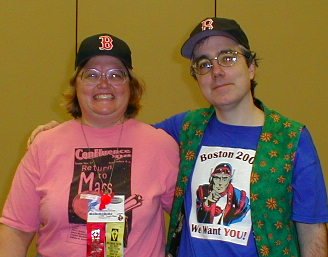A Journey to the Center of the Earth by Jules Verne
The story starts when Harry’s uncle, Professor Hardwigg, finds an old Icelandic manuscript. He opens it, and out falls an old paper, covered with runes, apparently code. After sometime, Harry and Hardwigg translate it. It’s several hundred years old, and from the Icelandic scientist/alchemist Erne Saknussemm. The note says that Saknussemm has traveled to the center of the earth and gives instructions for those who would follow. Hardwigg, dragging the reluctant Harry with him, is off to
The book is full of wonderful, memorable scenes. My textual memory is not great, and over time I often forget details of books. But, even though I hadn’t re-read this novel in 20 years, I remembered many of the key scenes clearly. Of course I remembered the descent into Sneffels. But I also remembered Harry getting lost, and only finding his uncle and Hans again by finding a “whispering galley,” which carried his voice miles away. And their breaking the wall to find the underground stream and save themselves dying of thirst. And the crossing of the underground ocean, including their seeing the sea monsters and the magnetic storm. And many other scenes which stuck in my memory over the years.
This is one of Verne’s very best novels. Verne himself is a better, more complex writer than he is often given credit for in some circles. He has often been badly served by his translators. The current translator, for example, not only tries to anglicize the characters by changing the name Lidenbrook to Hardwigg and Alex to Harry, but his phrasing is often clumsy (he several times refers to “optical delusion,” for example), his measurements switch randomly from metric to English, and so on. I say “he,” but that’s a guess, by the way; the translation I read was un-credited.
My paperback (Signet) also featured an insightful afterword by Michael Dirda, who spends some time talking about Verne as a novelist, his place in literary history, and this novel in particular. It somewhat makes up for the so-so translation, but I do hope to find a better translation some day. We got several new translations of The Mysterious Island a few years back. You’d think we could get at least one new one of A Journey to the Center of the Earth.
A few notes on the movie: I also re-watched the movie recently. Despite being a tad long – ten minutes or so could have been edited out of the first half-hour or so – it holds up very well. James Mason makes a very good Lidenbrook. (Strangely, the movie restores the original names, but moves the opening from
In the movie, the note from Saknussemm is found embedded in a piece of volcanic rock, though it provides the same instructions. Where the movie really diverges, though, is in setting up a human adversary to oppose the professor, Alex, and Hans (and his pet duck Gertrude) – the evil descendant of Arne Saknussemm. It also adds another character – the widow Goetaborg (whose husband was murdered by Count Saknussemm) – who joins the professor et. al. in the trip to the earth’s center (which, in the movie, they reach).
It’s a good movie – perhaps the best of the Verne adaptations.

